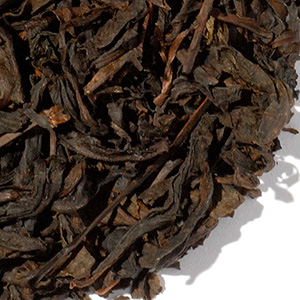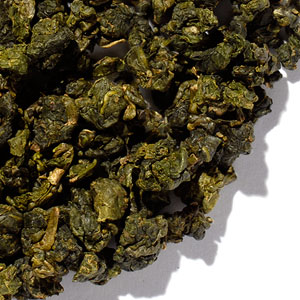Anyone who receives our newsletter knows we have been finding plenty of wonderful new Oolong teas. For those not familiar with what Oolong tea is, simply put, it is the category of teas spanning the entire range between Green and Black, and has traditionally been sun dried. The difference between Oolongs is mainly in how much the tea is oxidized, which effects how dark the tea appears and, generally, how strong the flavor is. Oolong actually covers a very broad range of teas and characteristics. Still, they tend to fall into two general types or ranges of oxidation, with all of them typically consisting of full, large leaves. The less oxidized, and therefore more “Green” ones are commonly rolled into small, round clumps. Many of these are classified as Ti Kuan Yin (or Tiguanyin, Tieguanyin or any other number of translations from Chinese) which are commonly believed to originate in the Anxi region of China, but are also grown in many other regions, particularly Fujian. This general category also includes Jade Oolongs (Tung Ting) which are traditionally from Taiwan.
The other traditional style of Oolong is more oxidized, bringing it close to the Black tea category. In this case, the leaves are traditionally left in a more natural state, or rolled slightly into long, narrow pieces. The most common types of these darker Oolongs are named Wu Yi, when they are from the Wu Yi region of China, or Formosa when they are from Taiwan, but they can come from anywhere tea is grown. Our new Wu Yi Natural Oolong is an excellent example of this type, and it is a particularly good value as well. For a unique tea that shares characteristics of both styles of Oolong, try our Fujian Oolong, which is one of the best values we have ever found. We have also developed some of our own Oolong blends, which are a great alternative to common breakfast teas. Our Wu-Nan Special is particularly delicious.
For anyone who hasn’t prepared Oolong tea before, it can be a little different from other teas. First, it usually requires more tea by weight than other teas. We’re a little detail oriented with our tea, so we usually weigh it rather than measure it with a spoon. With Oolongs, we will increase our normal amount of tea by as much as 50%. Since some Oolongs have very large, open leaves, this can seem like an awful lot of tea, and it does need an over sized infuser. The up side is that Oolongs can typically be infused several times, so the cost of Oolong can actually be lower than other teas.
For a final hint on enjoying Oolong tea, once it is done steeping, let it sit for a while as it’s kept warm with a cozy or insulated carafe. Oolongs tend to develop flavor after they are infused. So one small portion of Oolong tea can yield hours of enjoyment by re-steeping and allowing time for the flavor to develop.

